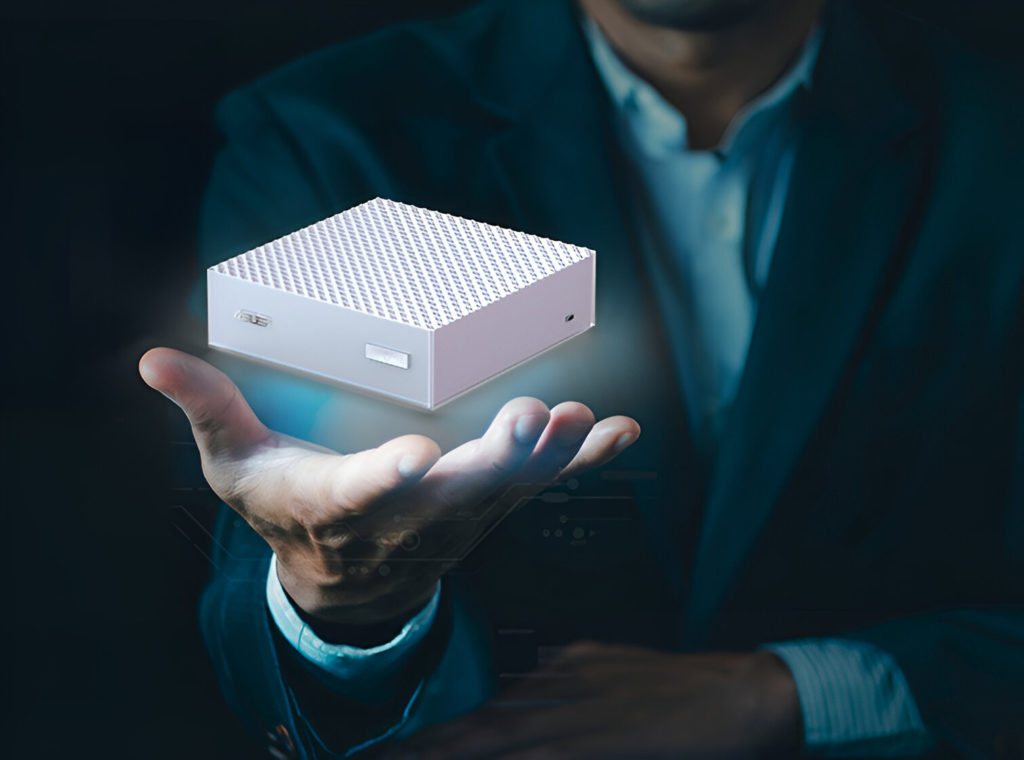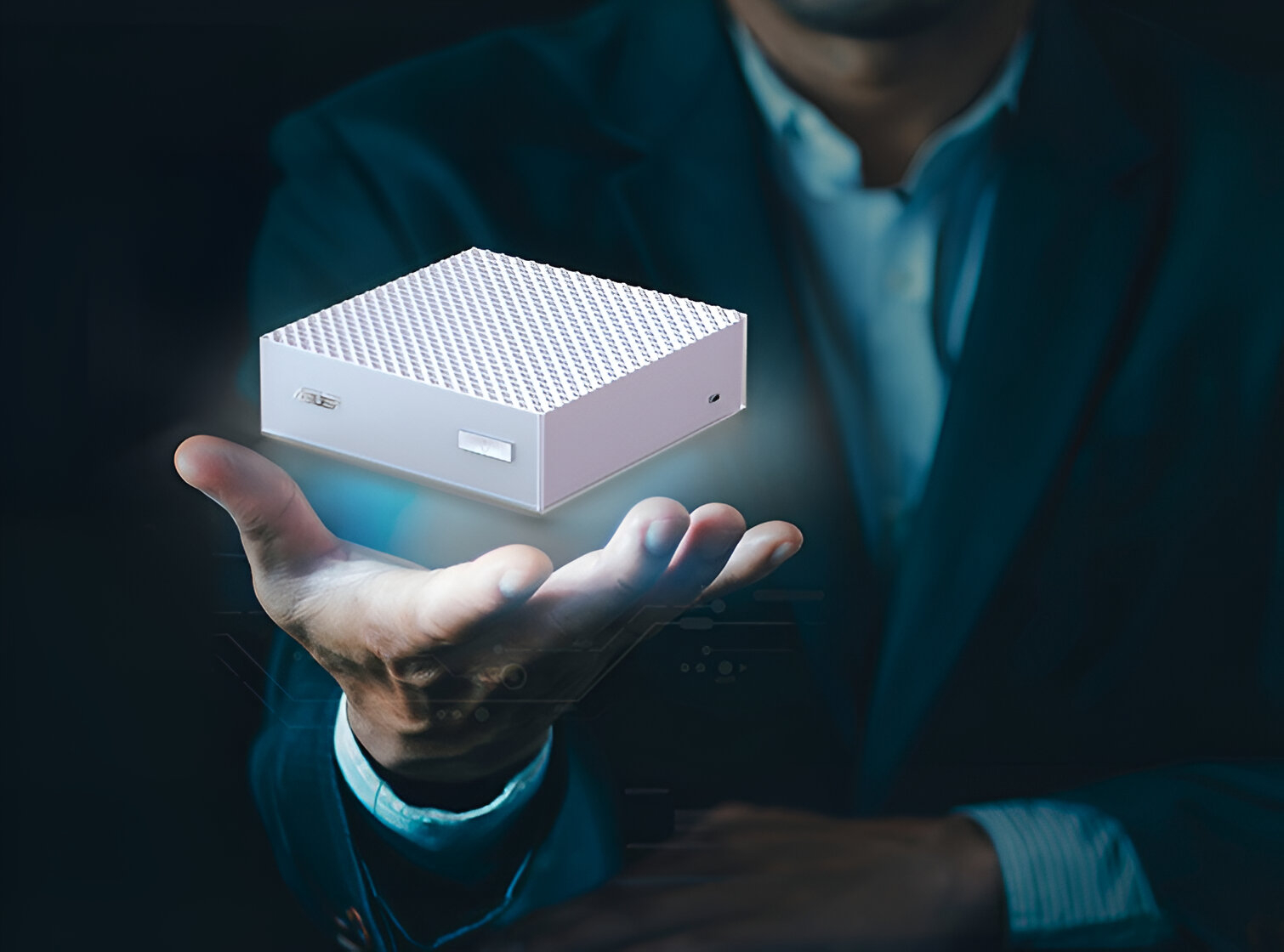Asus has unveiled the Ascent GX10, a groundbreaking mini-supercomputer that brings unprecedented AI computing power to the desktop. This compact device aims to transform how AI developers, data scientists, and researchers work by providing supercomputer-level processing in a personal form factor. Powered by NVIDIA’s cutting-edge GB10 Grace Blackwell Superchip, the Ascent GX10 represents a paradigm shift in personal computing, enabling complex AI model development and inference from the comfort of a home office. Let’s explore the five key innovations that make this device a potential game-changer in AI development.
Reinventing the Personal Computer Form Factor

The Ascent GX10 challenges our perception of what a supercomputer looks like. Instead of room-sized server farms, Asus has packed extraordinary computing power into a small, elegant white box that sits unobtrusively on your desk. This “tiny, brick-like” device features a distinctive carved pattern on top, a simple power button, and connectivity ports. Despite its modest appearance, the GX10 delivers petaflops-scale processing power—performance previously available only in specialized data centers. This revolutionary form factor democratizes access to advanced computing, allowing AI developers to work with complex models without leaving their desk. The GX10’s design proves that extraordinary power no longer requires extraordinary space, bringing supercomputing capabilities into everyday work environments.
NVIDIA GB10 Grace Blackwell: The Brain of the Operation

At the heart of the Ascent GX10 lies NVIDIA’s revolutionary GB10 Grace Blackwell Superchip. This advanced System-on-Chip (SoC) combines a high-performance 20-core Arm-based Grace CPU with NVIDIA’s latest Blackwell GPU technology. The integration of 5th generation Tensor Cores and FP4 support specifically optimizes the chip for AI workloads. This architecture represents a fundamental shift in computing design, bringing together processing components that traditionally required separate hardware into a unified, efficient package. The GB10 chip has been specially optimized for compact form factors, allowing desktop-sized devices to achieve performance levels previously requiring massive hardware installations. As the article notes, other industry leaders including NVIDIA itself, Dell, and HP are embracing this approach, signaling a broader industry shift toward powerful, compact AI computing solutions.
Breakthrough AI Performance Specifications

The Ascent GX10’s technical specifications reveal its extraordinary capabilities. With 1,000 AI TOPS (Trillion Operations Per Second) of processing power, the system can handle complex neural network operations at unprecedented speeds. This processing power is complemented by 128GB of “coherent unified system memory,” allowing both CPU and GPU to access the same memory pool without performance-limiting data transfers. These specifications enable the GX10 to support “latest generation reasoning AI models of up to 200-billion parameters”—a scale previously requiring specialized infrastructure. In practical terms, this means developers can prototype, tune, and run inference on sophisticated AI models locally, eliminating dependence on cloud resources for many tasks. The system’s balanced architecture addresses the growing need for substantial computing power and memory as generative AI models continue to increase in size and complexity.
Scalable Computing Through System Linking

Recognizing that some AI projects require even more resources, Asus has built remarkable scalability into the GX10. The system comes with integrated NVIDIA ConnectX network interface cards that allow two units to be linked together, effectively doubling the available computing power. This feature enables handling truly massive models—the article specifically mentions Llama 3.1 with its 405 billion parameters. This modular approach to supercomputing gives developers flexibility to scale according to project needs without investing in entirely new systems. The connectivity design demonstrates Asus’s understanding that AI development often pushes beyond current hardware limitations, providing a cost-effective path to increased capabilities. This scalability transforms the GX10 from a powerful standalone unit into a building block for even more ambitious computing environments.
Seamless Workflow Integration from Desktop to Cloud

Beyond raw performance, the Ascent GX10 offers practical workflow benefits that address real-world development challenges. The system is designed to enable seamless transitions between desktop development and cloud deployment without requiring code adjustments. This feature allows developers to prototype locally, then scale to cloud data centers when necessary, maintaining a consistent development experience throughout. The GX10 also enhances data pre-processing capabilities, optimizes memory-intensive AI workloads, and supports real-time inferencing—addressing the full spectrum of AI development needs. While Asus hasn’t yet announced pricing or availability details, the article expresses hope that the system will be “in the accessible range,” potentially bringing supercomputing capabilities to a broader audience of developers and researchers. This integration of powerful local computing with cloud compatibility represents a significant step toward removing computing limitations in AI development.




























